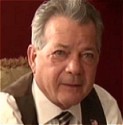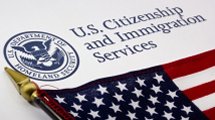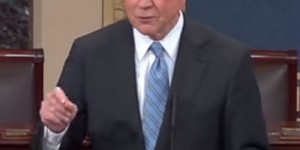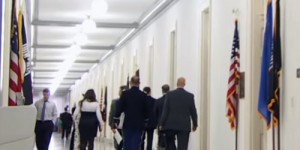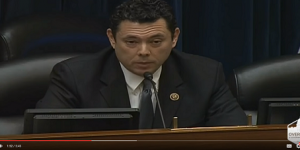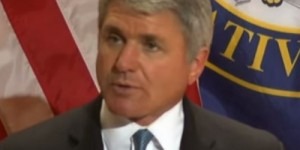POLITICO — First came the White House fence jumpers. Now it’s Congress, fencing off money for the embattled Secret Service because of a totally unrelated fight with President Barack Obama over immigration.
Just last Thursday, an independent review panel warned that the Service is already stretched thin and “in many cases, beyond its limits.” Training has “diminished far below acceptable levels” the panel found, and “under any scenario, the Service has to increase significantly in size.”
But two days before, on Dec. 16, Obama signed into law a governmentwide spending bill that did quite the opposite.
The Service’s chief operating account was frozen at $1.534 billion — about $50 million less than the president’s request and the number bipartisan House-Senate negotiators had agreed to for 2015. To relieve some of the pressure, Section 150 of the same bill allows the Service to temporarily spend at a higher rate as needed to prepare for “presidential candidate nominee protection” in the 2016 elections. But that says nothing about improved security at the White House, where early estimates run from $25 million to $32 million to support additional canine units, overtime and training, as well as improvements to the security infrastructure for Pennsylvania Avenue and the vice president’s residence.
Indeed, the whole arrangement is a fragile patchwork since the Department of Homeland Security — of which the Service is a part — is guaranteed funding only under a continuing resolution that expires Feb. 27.
How did it reach this point?
Top lawmakers in both parties and the White House acquiesced to the compromise, which was judged the fastest way to send Congress home, avoid a shutdown and put the rest of the government on permanent footing through Sept. 30 next year.
But it was House Republicans who really drove the bargain because the GOP insisted on holding Homeland hostage as a spending vehicle with which to challenge Obama over his Nov. 20 executive order shielding millions of undocumented immigrants from the threat of deportation.
Before the Homeland CR runs out, Republicans can count on being fully in charge of Congress. Their immediate target is the United States Citizenship and Immigration Services, the office within Homeland that will implement Obama’s order including the issuance of temporary work permits for qualified individuals who come forward.
Ironically enough, USCIS is largely self-funded, living off the fees it collects and not the relatively small share of annual appropriations it gets from Congress. By contrast, the Secret Service is wholly dependent on appropriations and now caught in the political crossfire.
“There was absolutely no intention to freeze the Secret Service,” said a House Republican aide, who quickly added that “the president must bear some responsibility for any fallout that occurs as a result of the Homeland CR.”
“Though he [Obama] obviously feels that he can act with impunity when he exceeds his constitutional powers, there are bound to be consequences,” the aide said. “He must shoulder some responsibility for those consequences.”
Rep. David Price (D-N.C.), who helps to oversee the Homeland budget in the House Appropriations Committee, roundly criticized the CR decision, which was “all about political pique directed at the president,” he said. Even Sen. Dan Coats (R-Ind.), Price’s counterpart on Senate Appropriations, cheerfully acknowledged a certain illogic to the strategy.
“If you transfer the word politics in the place of logic, you get a better idea of why this is being done,” Coats said.
The 11-page executive summary from the four-person independent panel added its own exclamation mark, so to speak.
For sure, many of the Service’s worst wounds are self-inflicted. Mindful of this record and the Service’s famously insular culture, the same review panel recommended new leadership from the outside as well as a more zero-based budget approach that would force the agency to take a fresh look about what its mission should really be.
Building a taller, better fence around the White House dominated the headlines. But in light of all its embarrassments, the decline in the Service’s training regimen — an issue that goes back directly to staffing and personnel costs — was the most startling.
The so-called “Fourth Shift” of the Presidential Protective Division had been designed to ensure that for two weeks out of every eight, the men and women assigned to the presidential detail were maintaining their “strength, practicing and getting better,” the report said. But in 2013, the panel found that the average special agent received only 42 hours of training, apart from firearms requalifications and basic career development technical requirements.
While the Uniformed Division has never expected to train at the same level as these special agents, here too the report found serious lapses. Service records for 2013 show “that the Uniformed Division as a whole received 576 hours of training, or about 25 minutes for each of over 1300 Uniformed Division officers,” the panel reported.
“We believe that the Secret Service should be staffed at a level that enables it to provide a true Fourth Shift for training to its Presidential Protective Division and Vice-Presidential Protective Division special agents, and to ensure that Uniformed Division officers are in training for no less than 10% of their time,” the report reads,
“Providing more time for training requires increased staffing, but the Secret Service needs more agents and officers even beyond the levels required to allow for in-service training. The President and other protectees cannot receive the best possible protection when agents and officers are deployed for longer and longer hours with fewer and fewer days off.”
“As an interim step, the Panel recommends that Congress and the Executive Branch work together to ensure appropriations sufficient for an additional 85 special agents and 200 Uniformed Division officers,” the report adds. “The Panel believes this is a first step, but likely not the last step, to ensure adequate training and personnel for the White House.”


